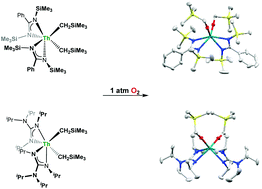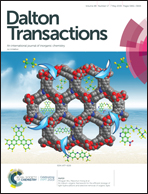Abstract
Exposure of bis-amidinate and -guanidinate supported thorium dialkyl complexes to dioxygen results in facile oxygen atom insertion and formation of the corresponding thorium bis(alkoxide) species. Preliminary mechanistic studies suggest a radical propagation mechanism is operative. All new complexes were fully characterized by 1H and 13C NMR spectroscopy, IR, EA and X-ray crystallography.

- This article is part of the themed collection: Challenges in organometallic & coordination chemistry: in celebration of Geoff Cloke’s 65th birthday


 Please wait while we load your content...
Please wait while we load your content...